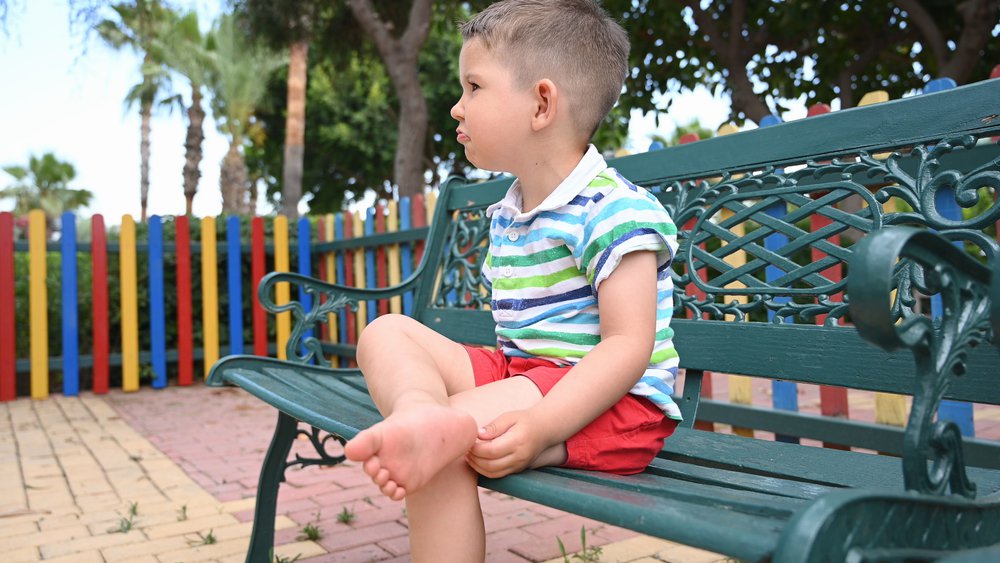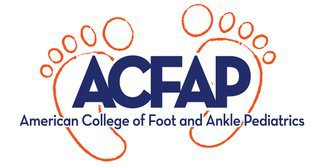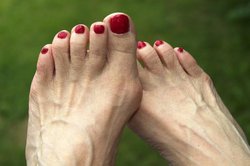 Pediatric heel pain is a common condition that can lead to discomfort and impaired mobility for children. Parents of children with heel pain often feel helpless when it comes to finding relief for their child. Heel pain in children is a common complaint, but the diagnosis and treatment of pediatric heel pain can be complicated. Here are the 6 common causes of heel pain in children.
Pediatric heel pain is a common condition that can lead to discomfort and impaired mobility for children. Parents of children with heel pain often feel helpless when it comes to finding relief for their child. Heel pain in children is a common complaint, but the diagnosis and treatment of pediatric heel pain can be complicated. Here are the 6 common causes of heel pain in children.
1. Overuse
Oftentimes, pediatric heel pain in children can be caused by overuse. When a child puts too much strain on the feet, this can cause irritation and inflammation in the tendons and ligaments of the heel as well as the heel bone. This can be due to running or jumping excessively as well as wearing inappropriate footwear, such as shoes that are too tight or provide inadequate support. Doing activities that involve repetitive foot movements such as kicking a ball or climbing stairs can also lead to injury if done repeatedly without sufficient rest time. Poor posture and habits while walking or running may also be contributors to pediatric heel pain.
In addition, stress fractures around the heel area can result from overuse, leading to pain and discomfort. Therefore, it is important for parents to ensure their children are engaging in safe physical activities and taking proper care of their feet in order to reduce their risk of developing painful conditions like pediatric heel pain.
2. Sever's Disease (Calcaneal Apophysitis)
Sever's disease, also known as calcaneal apophysitis, is the most common cause of heel pain in children, often between the ages of 8 and 13. It occurs when repetitive strain or stress on the growth plates at the back of the heel causes inflammation and pain. The symptoms are often made worse by activities such as running or jumping, particularly on hard surfaces such as concrete, and can range from a dull, nagging ache to sharp pains in the affected area. Sports such as soccer and basketball can aggravate the problem.
There is a growth plate at the back of the heel bone or calcaneus. The Achilles tendon attaches to the growth plate and, if tight, can lead to stress and strain at the area. Also, children who have heels that roll inward or pronate can aggravate the condition. It is important that a professional determine the causes of the problem in order to provide effective treatment.
If left untreated Sever's disease can have long-lasting consequences such as reduced mobility and difficulty walking as well as other issues related to chronic foot pain. Parents should therefore be aware of this condition and seek medical advice if they suspect their child is suffering from it.
3. Fractures
Fractures can cause heel pain in children as well, particularly if the fractures are located near the heel area. This type of fracture is known as a stress fracture and is more likely to occur when a child engages in high-impact activities that put excessive strain and repetitive stress on the bones, such as running or jumping without taking regular rest periods.
Another cause of this type of fracture may be due to poor posture and habits while walking or running. If a child does not maintain an upright body position and engage in good running technique it can put unnecessary stress on their feet, leading to fractures over time. The resulting heel pain can be severe and limiting and must be diagnosed properly so that prompt treatment options can be implemented.
4. Bursitis
Bursitis is another common cause of heel pain in children that can be attributed to overuse. Bursitis occurs when the bursa, a fluid-filled sac located around tendons, ligaments, and joints, becomes swollen due to excessive strain. This type of condition is more likely to occur in children who do not warm up or take rest periods before engaging in physical activities such as running and jumping. Poorly fitting shoes, flat feet, and an abnormally high arch of the foot can also contribute to bursitis.
The resulting heel pain can be severe and limiting, causing reduced mobility and difficulty walking or even standing for long periods of time. It is therefore important for parents to monitor their children's physical activity levels and ensure they take adequate rest breaks between activities to prevent the development of problematic conditions such as bursitis.
5. Achilles Tendonitis
Achilles tendonitis is a condition affecting the Achilles tendon, which is located at the back of the heel. It is often caused by overuse or structural abnormalities of the foot and ankle and is typically seen in children who participate in activities such as running, jumping, or dancing that increase strain on the Achilles tendon. Symptoms of Achilles tendonitis include pain and tenderness in the area, swelling around the affected area, and difficulty moving or walking.
If left untreated, it can lead to severe pain and long-term consequences such as reduced mobility, impaired gait, and even an increased risk of injury due to weakened muscles. Parents should therefore be aware of this condition and if they suspect their child might be suffering from it, seek medical advice as soon as possible to reduce pain.

If your child is suffering from heel pain, contact Dr. Ed Davis at South Texas Podiatrist to help them get the relief they need. To schedule a consultation, request an appointment directly from our website today!

